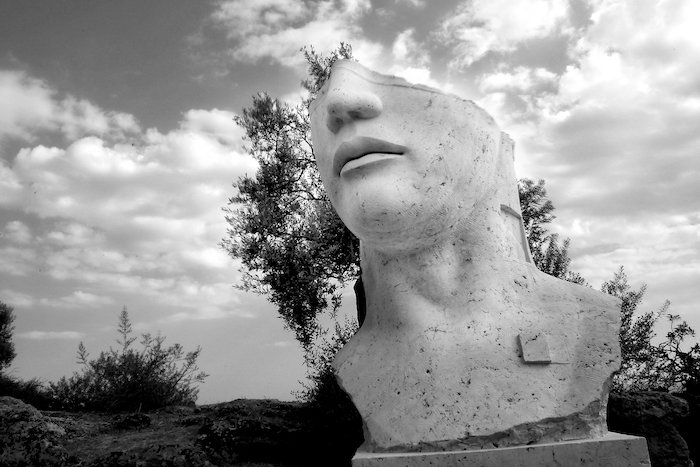Le maschere senza volto. Gli eroi “tragici” del nouveau roman
Abstract
Tra i vari movimenti sperimentali affermatisi nel corso del secondo Novecento il nouveau roman offre un’occasione quanto mai preziosa a chi volesse riconsiderare il mutevole valore e le innumerevoli funzioni attribuite al “tragico” alle soglie dell’era postmoderna. Posta al centro del dibattito critico da Alain Robbe-Grillet, la riflessione sull’ambiguo statuto di questo peculiare genere ha d’altronde rappresentato un momento cruciale nella definizione dell’identità dell’école du regard e del suo peculiare rapporto con la tradizione del canone occidentale.
Robbe-Grillet, dal canto suo, pur ispirandosi alla vicenda di Edipo nella sua opera d’esordio, non esiterà in seguito a condannare la tragedia come ingannevole forma di compromesso tra l’uomo e le choses e a rifiutare, insieme a essa, la “metafisica della presenza” di cui sarebbe espressione. Altri nouveaux romanciers – tra cui Michel Butor – preferiranno invece sfruttarne le potenzialità in maniera inedita, ritenendola uno sfondo mitopoietico ideale su cui far emergere i tratti essenziali di una condizione esistenziale all’insegna del crollo delle grandi narrazioni.
Al di là delle diverse intenzioni, la rivisitazione della “forma” in sé (in chiave parodica o attualizzante) ha di conseguenza svolto un ruolo cruciale sia nella decostruzione del “personaggio-uomo”, sia nella contestazione delle cosiddette “nozioni scadute” tanto indigeste a questa eterogenea collection d’écrivains. Da Les gommes (1953) a L’emploi du temps (1956), per arrivare sino a Sphinx en chapeau (1984), si potrebbero menzionare numerosi esempi a tal riguardo, segno di una fascinazione costante, ma non per questo meno conflittuale, destinata a esercitare una profonda influenza su alcuni dei maggiori dei successi editoriali dello sperimentalismo francese.
Un’influenza di cui oggi, ormai esauritisi gli accesi toni dello scandalo e della provocazione che accompagnarono l’affermazione del “nuovo romanzo” sulla scena internazionale, occorre valutare meglio la reale portata.
Downloads
Riferimenti bibliografici
Allemand, Roger-Michel – Milat, Christian (eds.), Alain Robbe-Grillet: balises pour le XXIe siècle, Parigi-Ottawa, Presses Sorbonne Nouvelle-Presses de l’Université d’Ottawa, 2010.
Barilli, Renato, Robbe-Grillet e il romanzo postmoderno, Milano, Mursia, 1998.
Barthes, Roland, Essais critiques (1964), trad. it. Saggi critici, Torino, Einaudi, 1972.
Bernal, Olga, Alain Robbe-Grillet: le roman de l’absence, Paris, Gallimard, 1964.
Boyer, Alain-Michel, “L’énigme, l’enquête et la quête du récit. La fiction policière dans Les Gommes et Le Voyeur d’Alain Robbe-Grillet”, French Forum, 6.1 (1981): 74-83.
Brignoli, Laura, “La technique “privative” du Nouveau Roman: l’exemple de Robbe-Grillet”, Francofonia, 43 (2002): 57-76.
Brunel, Pierre – Chevrel, Yves, Précis de littérature comparée, Paris, Presses universitaires de France, 1989.
Butor, Michel, L’emploi du temps (1956), trad. it. L’impiego del tempo, Milano, Mondadori, 1960.
Id., La modification (1957), trad. it. La modificazione, Milano, Mondadori, 1959.
Id., Répertoire: études et conférences 1: 1948-1959 (1960), trad. it. Repertorio: studi e conferenze 1948-1959,Milano, Il saggiatore, 1961.
Id., Lezioni e risposte sulla letteratura. Il seminario di Padova 1985, Milano, Franco Angeli, 1988.
Calabrese, Stefano, Retorica e scienze neurocognitive, Roma, Carocci, 2013.
Calvino, Italo, “La sfida al labirinto”, Il Menabò di letteratura, 5 (1962): 85-99.
DeBenedetti, Giacomo, Il personaggio-uomo, Milano, Il saggiatore, 1970.
Diaz, José-Luis, L’écrivain imaginaire. Scénographies auctoriales à l’époque romantique, Parigi, Honoré Champion, 2007.
Duffy, Jean H., Signs and Designs: Art and Architecture in the Work of Michel Butor, Liverpool, Liverpool University Press, 2003.
Givone, Sergio, “Introduzione”, Nietzsche: Opere 1870/1881, Roma, Newton Compton, 1993: 25-39.
Janvier, Ludovic, Une parole exigeante: le nouveau roman, Paris, Éditions de Minuit, 1964.
Kaës, Emmanuelle, “’Une textamorphose de légendes’: mythes et description de tableaux dans Le Chien Roi de Michel Butor et Pierre Alechinsky”, Revue de littérature comparée, 1/321 (2007): 73-85.
La Capria, Raffaele, “La denuncia di Robbe-Grillet”, Il Mondo, 10.05.1960: 15.
Le Calvez, Éric – Canova-Green, Marie-Claude (eds.), Texte(s) et intertexte(s), Amsterdam-Atlanta, Rodopi, 1997.
Lits, Marc, Le roman policier: introduction à la théorie et à l'histoire d’un genre littéraire, Liège, Éditions du Céfal, 1999.
Lydon, Mary, Perpetuum Mobile: a Study of the Novels and Aesthetics of Michel Butor, Edmonton, University of Alberta Press, 1980.
Merivale, Patricia – Sweeney, Susan (eds.), Detecting Texts: The Metaphysical Detective Story from Poe to Postmodernism, Philadelphia, University of Pennsylvania Press, 2011.
Morrissette, Bruce, Les romans de Robbe-Grillet, Parigi, Éditions de Minuit, 1963.
Mullen, Anne – O’Beirne, Emer (eds.), Crime Scenes: Detective Narratives in European Culture Since 1945, Amsterdam, Rodopi, 2000.
Ramsay, Raylene L., Robbe-Grillet and Modernity: Science, Sexuality, and Subversion, Gainsville, University Press of Florida, 1992.
Ricardou, Jean, Le nouveau roman, Parigi, Seuil, 1973.
Robbe-Grillet, Alain, Les gommes (1953), trad. it. Le gomme, Torino, Einaudi, 1961.
Id., Pour un nouveau roman (1963), trad. it. Il nouveau roman, Milano, Sugar, 1965.
Id., Le voyageur. Textes causeries et entretiens (1947-2001), Parigi, Christian Bourgois, 2001.
Tani, Stefano, The Doomed Detective: The Contribution of the Detective Novel to Postmodern American and Italian fiction, Carbondale, Southern Illinois University Press, 1987.
Yanoshevsky, Galia, Les Discours du Nouveau Roman: Essais, entretiens, débats, Villeneuve d’Ascq, Presses universitaires du Septentrion, 2006.
Informazioni sul copyright
Questa licenza permette a terzi di riprodurre, distribuire, comunicare al pubblico, esporre in pubblico, rappresentare, eseguire, recitare e modificare quest'opera, purché vengano citati l'autore e la rivista. Questa è la più ampia tra le licenze Creative Commons, rispetto alle libertà concesse a terzi sulle opere licenziate sotto Attribuzione.









